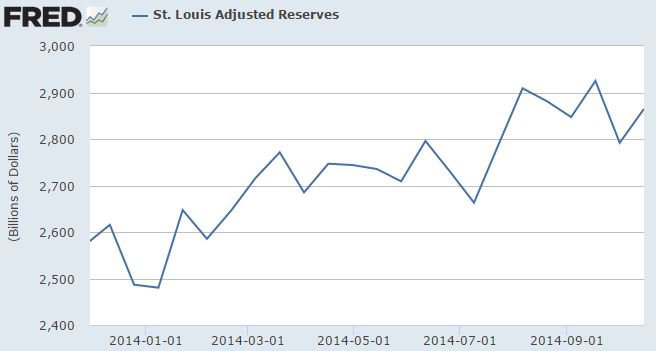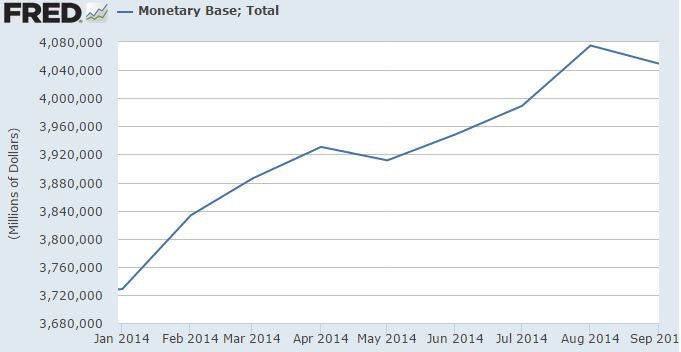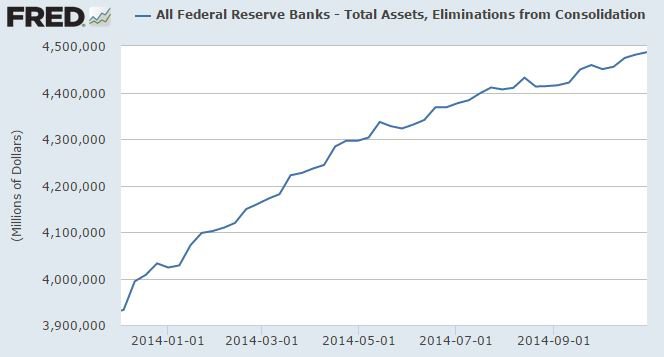Will the Fed Let Innovation Work Its Magic? – Article by Edin Mujagic

******************************
Sometimes one finds true gems in one’s archives. Recently I came across a speech by then-chairman of the Fed, Ben Bernanke, from May 18, 2013. It was the commencement speech at Bard College at Simon´s Rock, in Great Barrington, Massachusetts. In it, Bernanke chose to forget for a while the dire straits the Western economy is in and focused on prospects for economic growth in the long run, which he defined as “measured in decades, not months or quarters.”
In short, Bernanke focused on scientific and technological progress, more commonly described as innovation. He envisaged a fourth wave of innovation — the first three being the early industrial era (mid-1700s until mid-1800s), the modern industrial era (from 1880 onwards), and the IT-revolution.
His commencement speech was a speech of hope and of encouragement. But Bernanke did not tell the whole story. The then-Fed chairman failed to mention that living standards will depend on more than innovation. At least as important is the role of the very institution he chaired, the Federal Reserve, and what it does or does not do. If it allows high inflation to take hold — either through action or inaction — that would annihilate a very substantial part of the increase in living standards due to innovation.
And yet, recent history strongly suggests that the Fed will end up destroying a large part of the increase in living standards of those graduates Bernanke was speaking to. For example, at the beginning of 2013 Bernanke spoke at another American college. During the Q&A session, he said that “the worst mistake the Fed can make is to tighten monetary policy too soon.” In other words, the then-chairman essentially promised to raise interest rates too late. Nowadays, Bernanke may be gone from the Fed, but his line of thinking on monetary policy certainly has not, and indeed, this line of thinking reflects dominant Fed policy well beyond the Bernanke years.
Innovation and Living Standards
Bernanke, like Greenspan before him, is counting on innovation to keep the economy moving. As well he should. Technological innovation often leads to more efficient production and greater worker productivity which leads to higher wages and more affordable goods.
But if Bernanke is going to tell students that technology will make their lives better, he should also mention the role that he himself and other central bankers play in stifling the positive effects of innovation.
We can see multiple examples of this phenomenon in recent decades. For example, if we consider the effect that China’s entrance into the global economy should have had on living standards in the US, we find the actual results to be somewhat underwhelming. We should have witnessed growth in living standards similar to what we witnessed toward the end of the nineteenth century as the US industrialized. But in fact, the record of growth in real wealth in the US has been disappointing at best.
For example, technological progress due to the Industrial Revolution and globalization in the late nineteenth century led to continuous deflation in the US, and hence unprecedented increases in welfare. Research by Michael Bordo at Rutgers, shows that on average, prices fell by 1.2 percent each year between 1870 and 1896. Real living standards increased substantially over the same time period. Labor market economists in the United States have been able to reconstruct wage development in the United States since 1830. In every decade the real wage was higher than the preceding decade. That is, until the 1970s.
In contrast, in the decades since the early 1980s, as Asia was joining the world with its own industrial revolution, each year prices increased in the US by more than 2 percent. According to the statistics available from US Census, real median household income in the United States (i.e., income adjusted for inflation) barely moved between 1980 and 2012. This is odd, given the fact that economic growth averaged some 3 percent per annum and labor productivity soared by some 50 percent in total. A working American male earned approximately $48,000 in 1969. Adjusted for inflation, his income had barely grown by the time the current economic crisis started.
The main difference between the two periods is that in 1800s there was no Federal Reserve, and the money supply, while certainly not completely non-inflationary, was restrained by the absence of a central bank.
Lost Opportunities
In an unhampered market, technological progress, innovation, and globalization in the decades before the current crisis should have led to three things: slower wage growth, larger profits, and lower prices. In other words, what firms like Apple accomplished (i.e., the creation of innovative, labor-saving products made available at ever-lower prices) on a micro scale, should have happened on the macro-level as well. Slower wage growth would have been inevitable because of increased global competition in the labor market and the constant and increasing threat of jobs being offshored. Larger profits would have occurred economy-wide because of this fact, and the fact that production costs fell. And finally, lower prices would have spread throughout the economy because, due to technological progress, globalization, falling wages, and falling transportation costs.
The first two effects manifested themselves. As mentioned, real income barely budged in the last few decades in the United States. This becomes evident when we take a look at the total employee compensation in the United States. Measured as a share of GDP, US wages in recent years have been lower than during any other period since World War II. At the end of the war, the ratio was 53.6 percent. Nowadays, we find it below 45 percent.
Moreover, as a rule of thumb, the lower the share of wages in any country’s GDP, the higher the share of profits. So we find the second effect evident as well: profits increased.The third effect, however, falling prices, has been largely prevented by the intervention of the central bank. In fact, the Fed aimed for, and continues to aim for some 2 percent inflation per annum. The Fed has been very successful in preventing prices from falling even when the downward pressure on prices was strong, due to the aforementioned combination of technological progress, innovation, globalization, and free trade.
In more than a century before the inception of the Fed in 1913, cumulative inflation in the United States was approximately 0 percent. Between January 1, 1914 and July 2013, cumulative inflation in the United States stood at 2,236 percent, prompting Milton Friedman to write — way back in 1988 —that “no major institution in the US has so poor a record of performance over so long a period, yet so high a public reputation.”
A logical consequence of any “fourth wave” of innovation should be deflation, or falling prices. Then and only then will the living standards of those graduates who were listening to Bernanke indeed increase strongly. It will not happen as long as the Fed continues to aim for inflation every year and certainly not if the Fed continues to follow its current policy that will, according to many, cause even higher inflation in years to come.
Edin Mujagic has a Master’s degree in macro and monetary economics from Tilburg University (The Netherlands) and is an independent macro-economist and author of Money Murder: How the Central Banks Are Destroying Our Money (published in Dutch, as Geldmoord). He is the youngest-ever member of the Monetaire Kring (Monetary Circle) in the Netherlands, a by-invitation-only policy forum of university professors and senior officials at the central bank, ministry of Finance, banks, pension funds and other financial institutions.
This article was published on Mises.org and may be freely distributed, subject to a Creative Commons Attribution United States License, which requires that credit be given to the author.


